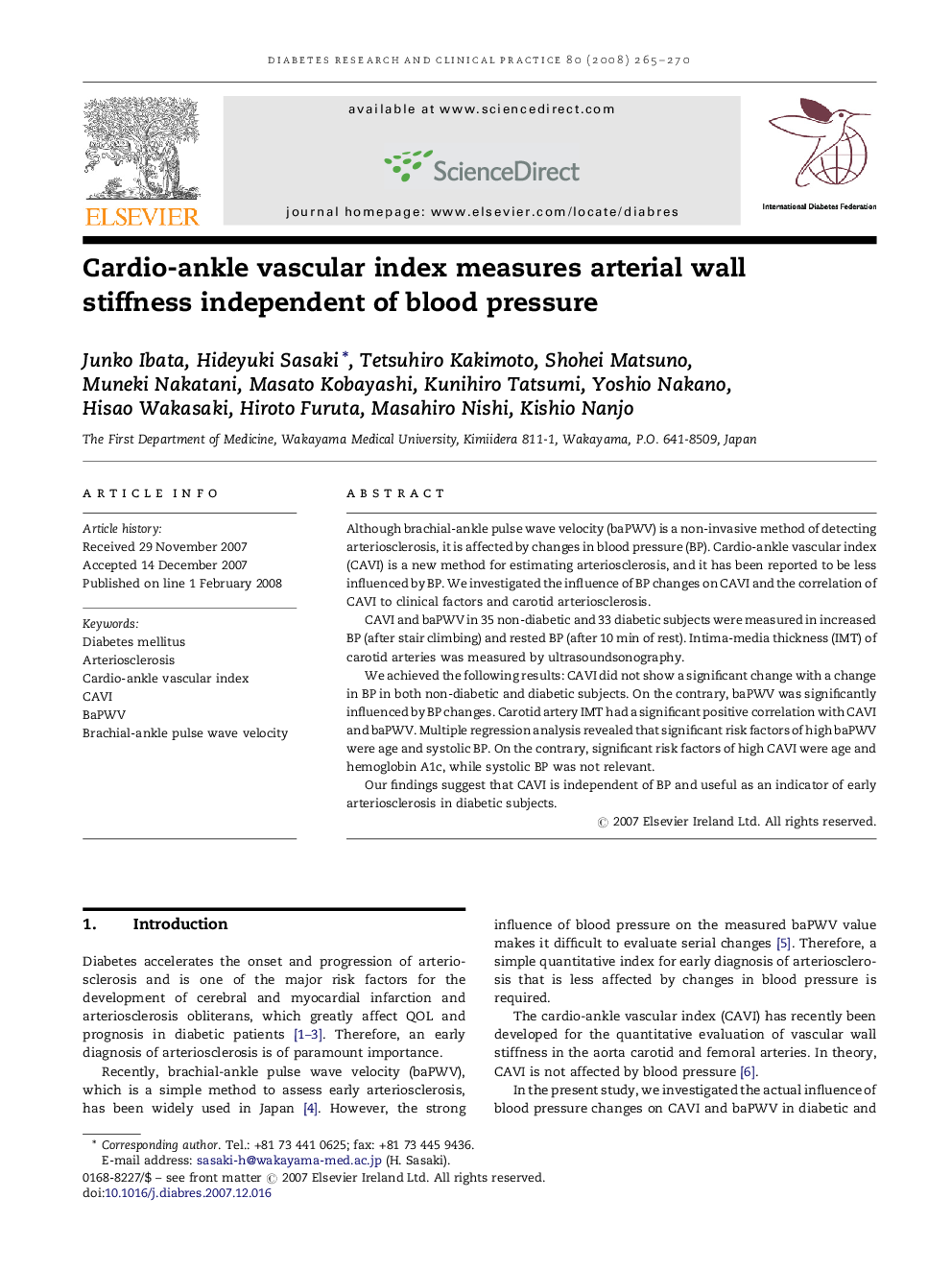| Article ID | Journal | Published Year | Pages | File Type |
|---|---|---|---|---|
| 2798354 | Diabetes Research and Clinical Practice | 2008 | 6 Pages |
Although brachial-ankle pulse wave velocity (baPWV) is a non-invasive method of detecting arteriosclerosis, it is affected by changes in blood pressure (BP). Cardio-ankle vascular index (CAVI) is a new method for estimating arteriosclerosis, and it has been reported to be less influenced by BP. We investigated the influence of BP changes on CAVI and the correlation of CAVI to clinical factors and carotid arteriosclerosis.CAVI and baPWV in 35 non-diabetic and 33 diabetic subjects were measured in increased BP (after stair climbing) and rested BP (after 10 min of rest). Intima-media thickness (IMT) of carotid arteries was measured by ultrasoundsonography.We achieved the following results: CAVI did not show a significant change with a change in BP in both non-diabetic and diabetic subjects. On the contrary, baPWV was significantly influenced by BP changes. Carotid artery IMT had a significant positive correlation with CAVI and baPWV. Multiple regression analysis revealed that significant risk factors of high baPWV were age and systolic BP. On the contrary, significant risk factors of high CAVI were age and hemoglobin A1c, while systolic BP was not relevant.Our findings suggest that CAVI is independent of BP and useful as an indicator of early arteriosclerosis in diabetic subjects.
